Mustard is referred to as siderate, it perfectly enriches the soil, saturating it with useful substances. In addition, she can fight the invasion of some pests, for example, wireworms.
Many sow it in the fall, but in order to achieve a positive result, you need to know when to do it, and carry out all the necessary measures to care for the crop.
Content
Mustard as a Siderat
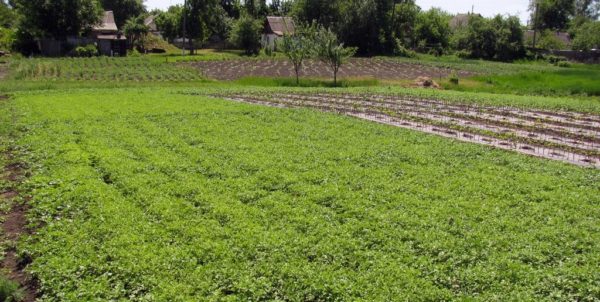 This annual plant belongs to the genus cruciferous. Many gardeners use crops to fertilize the soil. It can grow on almost any soil with any level of acidity. The seeds resemble small beans, a week later after sowing they germinate, and after 30 days the height of the plant reaches about 25 centimeters. Thanks to active growth, it is one of the three most effective green manure for growing in the fall. The root system of the plant grows rapidly and goes to an impressive depth. And this contributes to its loosening and increase air permeability.
This annual plant belongs to the genus cruciferous. Many gardeners use crops to fertilize the soil. It can grow on almost any soil with any level of acidity. The seeds resemble small beans, a week later after sowing they germinate, and after 30 days the height of the plant reaches about 25 centimeters. Thanks to active growth, it is one of the three most effective green manure for growing in the fall. The root system of the plant grows rapidly and goes to an impressive depth. And this contributes to its loosening and increase air permeability.
Both the roots and the aboveground part have light substances for assimilation. The constituents of the culture allows it to be classified as biohumus of natural origin. Most often, for fertilizing the substrate sown white mustard.
Advantages and disadvantages of autumn sowing
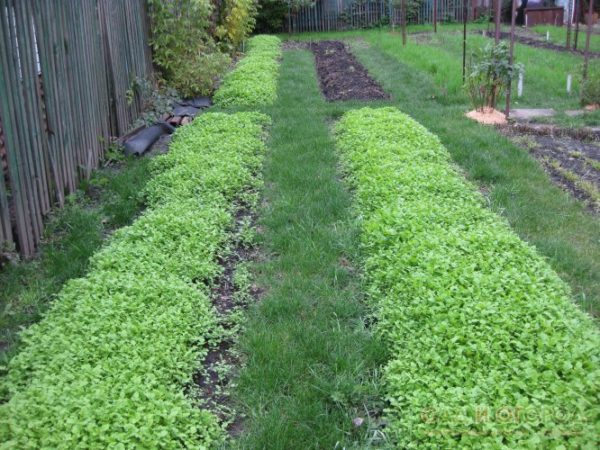 Even gardeners without experience in growing various crops will cope with the care. The main purpose of siderate is to saturate the soil with such useful substances as phosphorus and nitrogen. When digging, the aerial part of the plant enriches the soil with these elements. And in the new season, planted plants easily absorb them.
Even gardeners without experience in growing various crops will cope with the care. The main purpose of siderate is to saturate the soil with such useful substances as phosphorus and nitrogen. When digging, the aerial part of the plant enriches the soil with these elements. And in the new season, planted plants easily absorb them.
Advantages
- high germination rates and active growth;
- frost resistance, plants withstand cold up to minus five degrees;
- seed does not need to be prepared in advance;
- culture protects plantings from slugs, prevents the invasion of Colorado beetles;
- where green manure is grown, less weedy grass;
- the essential oils that are contained in the plant will help destroy phytophthora and scab pathogens in the soil;
- the plant is able to absorb even those substances that are inaccessible to other crops;
- sowing mustard in the winter is an excellent prevention of erosion, where there is a chance of soil erosion, the crop is sown densely.
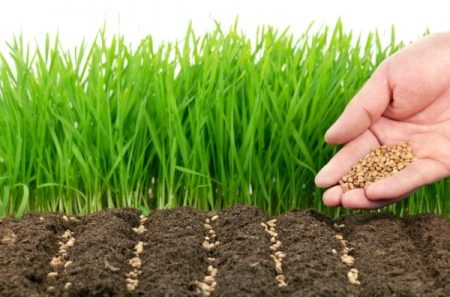 You may be interested in:
You may be interested in:disadvantages
- if you do not mow the plants in time, they bloom, and the seeds spread through the wind, fall into the soil and sprout, in the future mustard will grow like a weed and it will be quite difficult to remove it;
- this siderat is not suitable as a precursor for cruciferous (cabbage, turnips, radishes);
How and when to sow mustard in autumn to improve soil
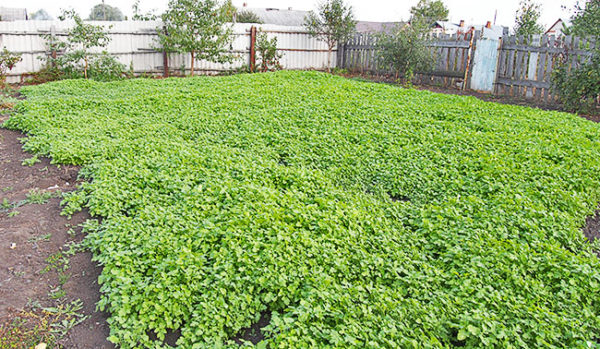 Sowing work is usually carried out after harvesting or just before winter. The procedure is quite simple and does not require special skills or knowledge, the main thing is to follow the rules of crop rotation. If one of the varieties of cabbage or radishes grew on the plot, then it is better to plant other siderates there.
Sowing work is usually carried out after harvesting or just before winter. The procedure is quite simple and does not require special skills or knowledge, the main thing is to follow the rules of crop rotation. If one of the varieties of cabbage or radishes grew on the plot, then it is better to plant other siderates there.
Early sowing
If you plan to plant mustard in the fall, then do it as soon as possible.Why don't you have to wait until the whole crop is harvested? After all, it can be sown gradually. The faster the plants are planted, the more green mass they will gain. Naturally, the soil will be fertilized all the more qualitatively.
Before planting mustard, the soil needs to be loosened a little, 5-10 cm. Then moisten and seed up to a depth of 2-4 cm. Usually, 500 g of seeds are enough for a plot of 100 m2. After the emergence of seedlings, the culture does not need special care. Do I need to dig the sowed mustard in the fall? Each gardener decides for himself. Some, after building up a sufficient amount of greenery, mow it and plant it in the soil. Someone sows the seeds later, and in the spring he simply digs the entire plot.
Late sowing
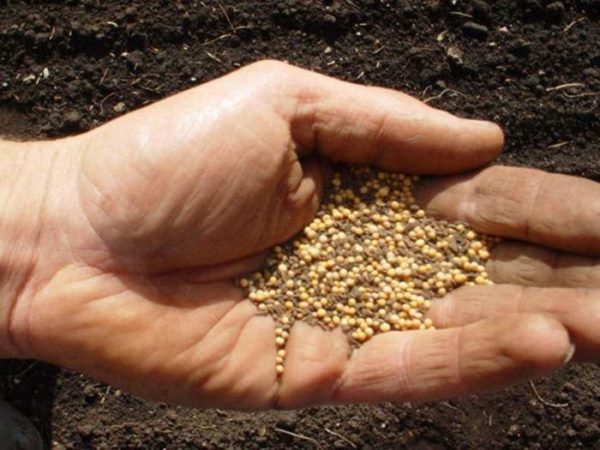 In order for the seedlings to appear in the spring, one must sow mustard before winter, before the onset of cold weather. At the same time, seedlings should not be allowed to appear. With the onset of spring, planted mustard will rise early and grow quickly, managing to grow long before the time comes to plant seedlings.
In order for the seedlings to appear in the spring, one must sow mustard before winter, before the onset of cold weather. At the same time, seedlings should not be allowed to appear. With the onset of spring, planted mustard will rise early and grow quickly, managing to grow long before the time comes to plant seedlings.
After that, they mow the planting, dry it a little and close it into the soil to a depth of 15 centimeters. In the same area, after some time, you can plant seedlings.
White mustard as a fertilizer and care for it
This type of mustard protects the site from weeds, and saturates the soil with minerals and trace elements. However, if you sow a crop on poor unprepared soils there will be no result. Sowing green manure cannot replace fertilizer application such as humus or compost. In order for the soil to be healthy and fertile, it is necessary to carry out a whole range of measures.
In care, the culture is unpretentious and will grow in any areas, but it is best to cultivate it in well-drained areas. On heavy soil, growth slows down. The plant develops well both in partial shade and in sunny areas, the main condition is a long daylight hours.
Shoots appear at temperatures above 10 degrees Celsius after 3-5 days. If mustard is sown in late autumn (for winter), it is necessary that the temperature drops below these indicators. With early sowing, a green carpet will cover the ground a month later, and then buds will appear. The flowering period usually occurs after 6-7 weeks, it is long. There is no need for additional feeding. Watering in the garden is carried out only if necessary, if the soil begins to dry out.
When to dig mustard when sowing in the fall and does it need to be done?
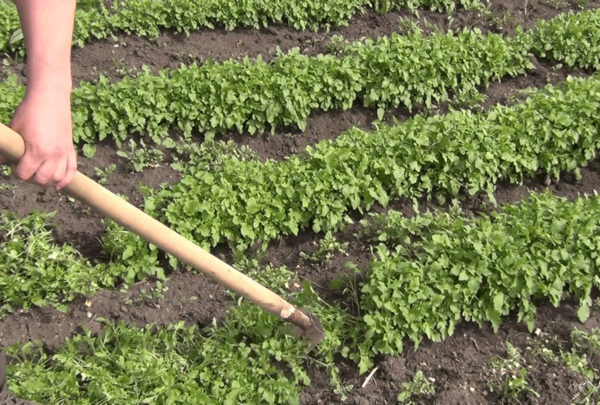 Agronomists disagree on whether to dig mustard. Some do not understand why to do this, because during the winter she will already cope with her task, and in the spring she will only have to plow the garden. However, this is subject to late landing. If you mustard the mustard in early autumn, you can dig it up, as it is better not to allow flowering.
Agronomists disagree on whether to dig mustard. Some do not understand why to do this, because during the winter she will already cope with her task, and in the spring she will only have to plow the garden. However, this is subject to late landing. If you mustard the mustard in early autumn, you can dig it up, as it is better not to allow flowering.
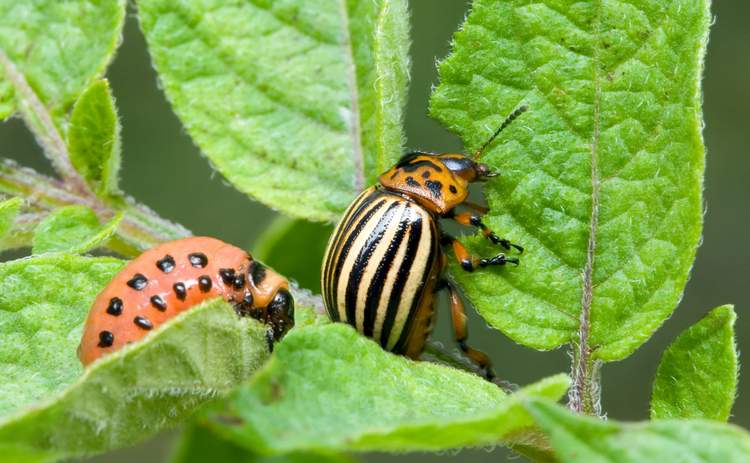 You may be interested in:
You may be interested in:Mowing plants is carried out 30-45 days after planting, and after it is planted in the soil. If there is no precipitation, then the fertilized area is watered, this is necessary so that the organic matter decomposes. Earthworms and other microorganisms participate in this process, and they are found only in moistened substrates.
Digging Rules
To achieve the desired result, compliance with several rules will help:
- Experts in the field of agronomy recommend digging up the plant before winter, during the cold period it will have time to saturate the soil with useful substances.
- The best way to dig is to use a method called "coma turnover."
- All green mass must be embedded in the soil.
- The soil must be moist.
- Before digging, all weed must be removed.
Conclusion
Sowing seeds is a simple and not painstaking process. Care for the crop needs minimal, only rare watering during drought. But it should be remembered that sowing of green manure does not replace organic fertilizing. If everything is done correctly, already in the next season the yield of planted crops should increase.
